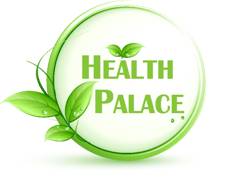How to Improve your Skin, Hair and Nails Health Naturally? | Natural Ways to Get Healthy Hair, Skin and Nails
Certain specialized structural proteins including keratin, collagen, and elastin are responsible for the appearance, integrity, and health of the skin, hair, and nails. Keratine play a role to maintain structure and protects the outer layer of the hair, skin, and nail. Collagen fibers are strengthening; and elastin helps with elasticity and the ability for quick recovery of the skin. These proteins and their functions are affected by biological aging, internal, and external factors such as nutrition and UV exposure. Certain lifestyle changes, topical treatments and targeted nutritional interventions help to slow and potentially reverse premature skin aging.
Which Factors Would Compromise The Health of The Hair, Skin, and Nails?

Aging impacts the collagen, elastin, keratin, and melanin (skin pigments). Biological process of aging causes changes in the structure and the function of skin, hair, and nail tissue leading to changes such as wrinkled, dry, and thinner skin; grey and thinner hair; and brittle lifeless looking nails.
Skin cells and tissues responsible for maintaining the structure and function of the skin are influenced by hormones including growth, female, and male hormones, as well as DHEA. Hormones and hormonal levels play an important role to the changes on the hair, skin, and nail. High blood sugar, and inflammation are damaging collagen structure and interrupt its production.
Glycation is a major contributor to skin aging. Glycation is when the sugar molecules bound with protein and fat molecules in the body. This reaction is significantly accelerated when blood sugar is elevated. Attachment of the sugar to collagen and elastin proteins cause them change into advanced glycation end products (AGEs), interrupting the skin’s structure. In addition, glycation encourages the inflammation in the body as well as in the skin cells.
Inflammation interferes with collagen synthesis and actually promotes collagen breakdown partly via activation of an enzyme known as matrix metalloproteinases.
A group of skin cells called fibroblasts produce collagen-rich connective tissue providing the important structure and function of the skin. These collagen-producing fibroblasts in the skin work based on the signaling factors called transforming growth factor betaandconnective tissue growth factor. The levels of these growth factors decline as we age causing loss of collagen and thin, fragile skin.
Other group of the skin cells are called Melanocytes responsible for producing skin and hair pigments known as melanin. Usually the number of melanocytes decrease by 10-20 % in each decade.
Pollution in general, toxins, chemicals in the cosmetics, strong soaps, smoking, and increased free radicals all would damage the skin. UV exposure enhances the activity of the enzymes which break down collagen and elastin.
UV radiation from the sun is one of the most damaging external factors to the skin. Sun exposure is suggested to contribute to 80% of facial skin aging. UV light creates large number of free radical in the skin tissue, targeting the Collagen and elastin fibers in the skin. UV light also activates certain enzymes which speed up the collagen degradation.
Those with exposure to air pollution experience rapid skin aging which includes a 20% increase in pigment spots on the cheeks and forehead, and significantly more pronounced wrinkles. Cleansing and detoxification helps by reducing the volume of pollutants and therefore their unwanted effects on the organs such as skin.
Lack of sleep promotes chronic low-grade inflammation. Short sleep duration of 5 hours or less is associated with higher skin aging scores and longer recovery time from exposure to UV light. Stress can trigger or worsen different inflammatory skin conditions such as psoriasis, acne, dermatitis, as well as the skin aging. Stress promotes release of stress hormones. Constantly high levels of cortisol accelerates the loss of collagen and elastin contributing to dry thinner skin, delayed wound healing, and easy bruising.
The external factors like sun, internal causes, or just natural aging process, all would result in damaged skin which is characterized by dryness, discoloration such as appearance of age spots, thinning, wrinkling, and low elasticity.
What Could Help to Maintain Youthful Qualities Of The Skin?
Supporting the skin's inherent defense mechanism by employing different science based interventions helps to slow and / or reverse skin damage.These include positive lifestyle habits, healthy eating, using sunscreen, quality sleep, lowering stress, effective and natural ingredients that help support skin structure from the inside out.
Diet is being recognized as a contributing factor to skin diseases such as acne, atopic dermatitis, psoriasis, and aging. For example, a diet high in sugar and starch would keep blood sugar levels high and promotes glycation and production of AGEs damaging the cells and tissues contributing to structural changes in the skin such as loss of elasticity and increased stiffness. Spices like cinnamon can help reduce the production of advanced glycation end products (AGEs).
Plant-based foods are rich in nutrients such as polyphenols, carotenoids, omega-3 fatty acids, and vitamins A, C, and E, providing protection against UV radiation.
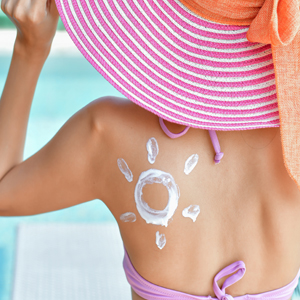
Sunscreens and sunblocks are different important skin-care products and commonly used to prevent skin photoaging caused by UV radiation from the sun. Sunscreens and sunblocks should provide broad-spectrum protection against both UVA and UVB radiation. Sunblock is opaque and stronger than sunscreen, since it is able to block most of the UVA/UVB rays and radiation from the sun, and does not need to be reapplied several times in a day. Titanium dioxide and zinc oxide are two of the important ingredients in sunblock.
Sunscreen is more transparent once applied to the skin and also has the ability to protect against UVA/UVB rays. It is important to allow some time for sunscreen to be absorbed into the skin before sun exposure. It is recommended to apply sunscreen 30 minutes before going outside. The sunscreen's ingredients have the ability to break down at a faster rate once exposed to sunlight, and some of the radiation is able to penetrate to the skin. In order for sunscreen to be more effective it is necessary to consistently reapply and use one with a higher sun protection factor.
Collagen is one of the main proteins in the skin, hair, and nail. Collagen in hair contributes to its strength and growth. In fact, certain types of collagen produced by hair follicles in higher levels than in the skin. Apparently, age-related hair thinning and loss is related to a loss of collagen. Taking collagen peptide supplement has helped to improve skin moisture, elasticity, and reduce wrinkles. There was a 65% improvement in collagen and 18% improvement in elastin synthesis in the skin of the treatment group compared with the placebo group.
Collagen protein supplementation provides spectrum of amino acids from which the body can make keratin. Taking hydrolyzed collagen, for three months has helped to return healthy appearance and normal structure to brittle, soft, peeling, and easily broken nails.
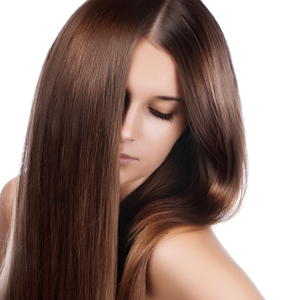
Biotin is a B vitamin that helps improve skin, hair, and nail health. Participants with brittle nails who took minimum of 2.5 mg of biotin for several months had thicker, firmer and healthier nails when compared with the placebo.
Hair loss is a symptom associated with biotin deficiency. Individuals with sever types of hair loss such as found in alopecia would require much higher doses of Biotin. Participants who were given Biotin and Zinc in combination with their regular treatment after one year had 33% of complete hair re-growth, compared with none from the group with the regular treatment alone.
Zinc is an essential mineral for healthy skin and hair. Zinc has high concentration in hair follicles. Zinc helps to stabilize cell membranes, and it is necessary for proper wound healing. Zinc has been employed to treat alopecia for several months to even a few years. Zinc has also helped improve dry and scaly skin conditions.
Nicotinamide, also known as niacinamide, is a form of vitamin B3 found in food and used as a dietary supplement. As a supplement, it is taken by mouth to prevent and treat pellagra which is a disease caused by a lack of the niacin (vitamin B3). While nicotinic acid (niacin) may be used for this purpose, nicotinamide has the benefit of not causing skin flushing. Nicotinamide (niacinamide) has been successfully used orally as a safe treatment for a variety of inflammatory skin conditions including acne, rosacea, ageing skin, dermatitis, skin cancer, the side-effects of UV, and chemotherapy.
There are two types of B3 deficiencies, a diet poor in vitamin B3; and a poor ability to absorb the niacin from the diet. This is seen in high alcohol consumption, long term diarrhea, and the usage of certain antibiotics. Nicotinamide increases the production of ceramides in human keratinocytes (skin cells) in vitro and improves the epidermal permeability barrier in vivo.
In 2015 in a trial of 12 months, taking nicotinamide helped reduce the rate of new non-melanoma skin cancers and actinic keratoses in a group of people at high risk for the conditions.
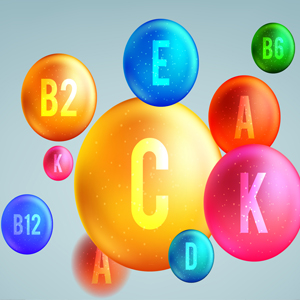
Nicotinamide is also the precursor of nicotinamide adenine dinucleotide (NAD+), a compound required for energy (ATP) production. UV radiation suppresses DNA repair by depleting cellular energy. Nicotinamide by increasing levels of NAD+ helps with energy production and DNA repair. In rodents Nicotinamide helped prevent the UV light induced skin cancer .
Pantothenic acid (vitamin B5), is an essential nutrient in the diet and is important to wound healing. Vitamin B5 deficient mice develop gray fur and skin irritation, which resolved with vitamin B5 supplementation.
Silica (Silicon) is an essential trace mineral participating in connective tissue health and it s considered a factor in structural integrity of hair, nails, and skin. Silica is involved in the synthesis and stabilization of collagen. Silica deficiency would result in lower collagen concentration. Brittle hair, skin, and nails may improve by silica supplementation. Silica is required for the function of an enzyme (prolyl hydroxylase) which participates in formation of collagen in bone & cartilage.
Ceramides are an essential part of the protective layer of the skin. Ceramides are a family of waxy lipid molecules. Although present in other tissues, ceramides are especially concentrated in the skin where they help maintain normal skin hydration and barrier function; this layer of the skin is composed of 50% ceramides, 25% cholesterol, and 15% free fatty acids. Altogether ceramides with cholesterol and saturated fatty acids, create a water-resistant, protective organ to prevent excessive water loss due to evaporation as well as a barrier against the entry of microorganisms.
In psoriasis the water permeability barrier is compromised. It is very well known that the low ceramide level is a key contributing factor to variety of the skin conditions, as well as the age-related skin dysfunction which could be a result of ceramide deficiency. Ceramide concentrations decrease with age and exposure to UV radiation in sunlight. A clinical trial using ceramide-rich wheat extract showed increased skin hydration in those taking the extract rather than the placebo.
Ceramides are found as ingredients of some topical skin treatments to complement treatment for skin conditions such as eczema. They are also used in cosmetic products such as some soaps, shampoos, skin creams, and sunscreens.
Omega-3 fatty acids provide photo-protective and anti-skin-aging effects helping to protect skin against the damaging effects of UV light. Omega 3 high in EPA, would replace the Omega 6 (arachidonic acid) in the cell membranes, and that helps to reduce the possibilities of the production of arachidonic acid-derived inflammatory markers due to UV exposure or other stimulants.
Hyaluronic acid, a natural component of many tissues. Hyaluronic acid plays an important role in keeping the skin properly moisturized. Ingesting HA increased skin moisture and improved treatment outcomes for participants with dry skin. HA appears to get absorbed by the body and distributed, in part, to the skin. Ingested HA also encourages the of HA and promotes cell proliferation in fibroblasts. These effects show that ingestion of HA moisturizes the skin and is expected to improve the quality of life for people who suffer from dry skin.
Topically applied hyaluronic acid has improved skin hydration and elasticity while also significantly reducing wrinkle depth.
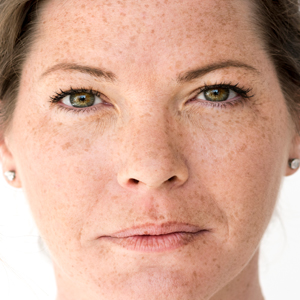
DMAE (2-dimethylaminoethanol) It is a colorless liquid. DMAE has been used as an ingredient in skin care, and as a supplement to improve cognitive function, and mood. DMAE is actually a lesser-known compound in fish and it is similar to choline. Topical application of DMAE gel formulation has helped to increase skin firmness.
DMAE may enhance water retention in connective skin tissue, and / or may improve the skin’s ability to transmit acetylcholine which promotes a form of muscle tightening in the skin. DMAE may not completely reverse existing facial sagging, but it may reduce its further progression while a cumulative effect with continued use it has been achieved.
Liver spots or Age spots also may respond effectively to DMAE in topical or oral form. DMAE helps to stabilize the cell membranes, and reduced the accumulation of lipofuscin deposits inside the cells. Lipofuscin is known as those brownish pigments which are formed from molecular waste due to inefficient metabolism of fatty acids. These pigments are more seen in the cells of older people and are the primarily reason for age spots. DMAE helps to flush excess lipofuscin pigments from the affected skin cells.
Vitamin C is a powerful antioxidant and essential for healthy synthesis of collagen. Concentration of vitamin C in the skin reduces by age, therefore; taking vitamin C or using topical vitamin C helps to restore its decline. It is suggested that topical application of vitamin C improves its concentrations in the skin 20‒40 times more effectively than oral intake. Topical vitamin C has helped to reduce oxidative stress of the skin, fine lines, and wrinkles; while improved subjective and objective appearance of photo damaged and photo aged skin within 3 months.
The human skin is the outer covering of the body and is the largest organ made up of multiple layers. Skin guards the underlying muscles, bones, ligaments and internal organs. The skin interfaces with the environment and is the first line of defense from external factors. Skin is important to maintain immunity by protecting the body against pathogens and excessive water loss. Skin other functions are including insulation, temperature regulation, sensation, synthesis of vitamin D, and the protection of vitamin B folates.
Due to aging skin becomes thinner and more easily damaged. Intensifying this effect is the decreasing ability of skin to heal itself as a person ages. Skin aging is also noted by a decrease in volume and elasticity. There are many internal and external causes to skin aging. For example, aging skin receives less blood flow and lower glandular activity. Clinically skin aging graded based on sagging, wrinkles, and the various demonstrations of photo-aging, including redness, telangiectasia ( tiny veins, or spider veins), dyspigmentation (brown discoloration), solar elastosis (yellow, thickened and deeply wrinkled skin due to chronic exposure to the sun), abnormal skin growths, and poor texture. High cortisol level causes degradation of collagen accelerating skin aging.
Related Articles:
How Does Dry Skin Affect Your Health
How to Remove Toxic Heavy Metals From Body naturally?
How to Reverse Aging and Stay Young Even In the Old Age?
Articles and products featured by Health Palace are collected from a variety of sources and are provided as a service by Health Palace. These newsletters, while of potential interest to readers, do not necessarily represent the opinions nor constitute the advice of Health Palace. Presented materials are only for information purposes and do not intent to treat, cure, or prevent any disease.
References:
- Schagen SK, Zampeli VA, Makrantonaki E, Zouboulis CC. Discovering the link between nutrition and skin aging. Dermatoendocrinol. Jul 1 2012;4(3):298-307.
- "Sunscreen or sunblock". Retrieved July 2015. Check date values in: |accessdate= (help).
- Hughes MC, Williams GM, Baker P, Green AC. Sunscreen and prevention of skin aging: a randomized trial. Ann Intern Med. Jun 4 2013;158(11):781-790.
- "Nanotechnology Information Center: Properties, Applications, Research, and Safety Guidelines". American Elements.
- An update on Suncreens; 2007; P 23- 29.Available at www.aocd.org/resource/resmgr/jaocd/2007aug.pdf.
- Iannacone MR, Hughes MC, Green AC. Effects of sunscreen on skin cancer and photoaging. Photodermatology, photoimmunology & photomedicine. Apr-Jun 2014;30(2-3):55-61.
- Pandel R, Poljšak B, Godic A, Dahmane R. Skin Photoaging and the Role of Antioxidants in Its Prevention. ISRN Dermatology. 2013;2013:930164.
- Phillips TJ, Demircay Z, Sahu M. Hormonal effects on skin aging. Clin Geriatr Med. Nov 2001;17(4):661-672, vi.
- Angelo G. Oregon State University. Linus Pauling Institute. Micronutrient Center. Essential Fatty Acids and Skin Health http://lpi.oregonstate.edu/mic/micronutrients-hea... February 2.
- Angelo G. Linus Pauling Institute. Micronutrient Information Center. Minerals and Skin Health. http://lpi.oregonstate.edu/mic/micronutrients-hea... 1/2013. Accessed 5/9/2016.
- Gkogkolou P, Bohm M. Advanced glycation end products: Key players in skin aging? Dermato-endocrinology. Jul 1 2012;4(3):259-270.
- Pageon H. Reaction of glycation and human skin: the effects on the skin and its components, reconstructed skin as a model. Pathologie-biologie. Jun 2010;58(3):226-231.
- Pageon H, Zucchi H, Rousset F, Monnier VM, Asselineau D. Skin aging by glycation: lessons from the reconstructed skin model. Clinical chemistry and laboratory medicine : CCLM / FESCC. Jan 1 2014;52(1):169-174.
- Hamers L. One reason your hair is thinning? Some of it turns into skin. Science: American Academy for the Advancement of Science. http://www.sciencemag.org/news/2016/02/one-reason... 2/4/2016. Accessed 5/6/2016
- Morita A. Tobacco smoke causes premature skin aging. J Dermatol Sci. Dec 2007;48(3):169-175.
- Hagenau T, Vest R, Gissel TN, Poulsen CS, Erlandsen M, Mosekilde L, Vestergaard P. Global vitamin D levels in relation to age, gender, skin pigmentation and latitude: an ecologic meta-regression analysis. Osteoporosis international : a journal established as result of cooperation between the European Foundation for Osteoporosis and the National Osteoporosis Foundation of the USA. Jan 2009;20(1):133-140.
- Minocha, R; Damian, DL; Halliday, GM (5 July 2017). "Melanoma and nonmelanoma skin cancer chemoprevention: A role for nicotinamide?". Photodermatology, Photoimmunology & Photomedicine. 34 (1): 5–12. doi:10.1111/phpp.12328. PMID 28681504.
- Chen, Andrew C.; Damian, Diona L. (2014). "Nicotinamide and the skin". Australasian Journal of Dermatology. 55 (3): 169–175. doi:10.1111/ajd.12163. PMID 24635573.
- Niren NM. Pharmacologic doses of nicotinamide in the treatment of inflammatory skin conditions: a review. Cutis. Jan 2006;77(1 Suppl):11-16.
- Namazi, Mohammad Reza (2003). "Nicotinamide: A potential addition to the anti-psoriatic treatment". The FASEB Journal. 17 (11): 1377–1379. doi:10.1096/fj.03-0002hyp.
- Chen AC, Martin AJ, Choy B, et al. A Phase 3 Randomized Trial of Nicotinamide for Skin-Cancer Chemoprevention. The New England journal of medicine. Oct 22 2015;373(17):1618-1626.
- Surjana D, Halliday GM, Martin AJ, Moloney FJ, Damian DL. Oral nicotinamide reduces actinic keratoses in phase II double-blinded randomized controlled trials. The Journal of investigative dermatology. May 2012;132(5):1497-1500.
- Colombo VE, Gerber F, Bronhofer M, Floersheim GL. Treatment of brittle fingernails and onychoschizia with biotin: scanning electron microscopy. J Am Acad Dermatol. Dec 1990;23(6 Pt 1):1127-1132.
- Higdon J. Linus Pauling Institute. Micronutrient Information Center. Biotin. http://lpi.oregonstate.edu/mic/vitamins/biotin. Last updated 10/21/2015a. Accessed 5/9/2016.
- NLM. U.S.
National Library of Medicine. Aging changes in hair and nails www.nlm.nih.gov/medicineplus/ency/article.nails. Last updated
8/23/2016a. Accessed 9/13/2016.
- Higdon J. Linus Pauling Institute. Micronutrient Information Center. Pantothenic Acid: Wound Healing. http://lpi.oregonstate.edu/mic/vitamins/pantothen... Last updated 7/2015b. Accessed 5/9/2016
- Ead RD. Oral zinc sulphate in alopacia areata-a double blind trial. Br J Dermatol. Apr 1981;104(4):483-484.
- Jugdaohsingh R. Silicon and bone health. The journal of nutrition, health & aging. Mar-Apr 2007;11(2):99-110.
- Seaborn CD, Nielsen FH. Silicon deprivation decreases collagen formation in wounds and bone, and ornithine transaminase enzyme activity in liver. Biological trace element research. Dec 2002;89(3):251-261.
- Kadler KE, Baldock C, Bella J, Boot-Handford RP. Collagens at a glance. Journal of cell science. Jun 15 2007;120(Pt 12):1955-1958.
- Okawa T, Yamaguchi Y, Takada S, et al. Oral administration of collagen tripeptide improves dryness and pruritus in the acetone-induced dry skin model. J Dermatol Sci. May 2012;66(2):136-143.
- Sudha PN, Rose MH. Beneficial effects of hyaluronic acid. Advances in food and nutrition research. 2014;72:137-176.
- Bender, David A. (2003). Nutritional Biochemistry of the Vitamins. Cambridge University Press. p. 203. ISBN 978-1-139-43773-8. Archived from the original on 2016-12-30.
- El-Alfy M, Deloche C, Azzi L, et al. Skin responses to topical DMAE: implications in antiageing treatment? Br J Dermatol. Nov 2010;163(5):968-976.
- Piccardi N, Manissier P. Nutrition and nutritional supplementation: Impact on skin health and beauty. Dermato-endocrinology. Sep 2009;1(5):271-274.
- Pilkington SM, Massey KA, Bennett SP, et al. Randomized controlled trial of oral omega-3 PUFA in solar-simulated radiation-induced suppression of human cutaneous immune responses. The American journal of clinical nutrition. Mar 2013;97(3):646-652.
- Surette ME. The science behind dietary omega-3 fatty acids. CMAJ : Canadian Medical Association journal = journal de l'Association medicale canadienne. Jan 15 2008;178(2):177-180.
- Besedovsky L, Lange T, Born J. Sleep and immune function. Pflugers Arch. Jan 2012;463(1):121-137.
- Oyetakin-White P, Suggs A, Koo B, Matsui MS, Yarosh D, Cooper KD, Baron ED. Does poor sleep quality affect skin ageing? Clinical and experimental dermatology. Jan 2015;40(1):17-22.
- Ortonne JP. Pigmentary changes of the ageing skin. Br J Dermatol. Apr 1990;122 Suppl 35:21-28.
- Evans JA, Johnson EJ. The role of phytonutrients in skin health. Nutrients. Aug 2010;2(8):903-928.
- Michels AJ. Linus Pauling Institute. Micronutrient Information Center. Micronutrients and Skin Health. http://lpi.oregonstate.edu/mic/micronutrients-hea... 9/2011. Accessed 9/13/2016.
- WHO Model Formulary 2008 (PDF). World Health Organization. 2009. pp. 496, 500. ISBN 978-924-154765-9. Archived (PDF) from the original on December 13, 2016. Retrieved December 8, 2016.
- British National Formulary: BNF 69 (69th ed.). British Medical Association. 2015. p. 822. ISBN 978-0-85711-156-2.
- Knip, M.; Douek, I. F.; Moore, W. P.; Gillmor, H. A.; McLean, A. E.; Bingley, P. J.; Gale, E. A. (2000). "Safety of high-dose nicotinamide: A review" (PDF). Diabetologia. 43 (11): 1337–1345. doi:10.1007/s001250051536. PMID 11126400.
- MacKay, D.; Hathcock, J.; Guarneri, E. (2012). "Niacin: Chemical forms, bioavailability, and health effects". Nutrition Reviews. 70 (6): 357–366. doi:10.1111/j.1753-4887.2012.00479.x. PMID 22646128.
- CPCE. Collagen Peptide Clinical Evidence. http://www.humanclinicals.org/collagen-peptide-1/... Accessed 5/9/2016
- Humbert PG, Haftek M, Creidi P, et al. Topical ascorbic acid on photoaged skin. Clinical, topographical and ultrastructural evaluation: double-blind study vs. placebo. Experimental dermatology. Jun 2003;12(3):237-244.
- Traikovich SS. Use of topical ascorbic acid and its effects on photodamaged skin topography. Archives of otolaryngology--head & neck surgery. Oct 1999;125(10):1091-1098.
- Raschke T, Koop U, Dusing HJ, et al. Topical activity of ascorbic acid: from in vitro optimization to in vivo efficacy. Skin Pharmacol Physiol. Jul-Aug 2004;17(4):200-206.
- Sauermann K, Jaspers S, Koop U, Wenck H. Topically applied vitamin C increases the density of dermal papillae in aged human skin. BMC dermatology. Sep 29 2004;4(1):13.
- Rabionet M, Gorgas K, Sandhoff R. Ceramide synthesis in the epidermis. Biochimica et biophysica acta. Mar 2014;1841(3):422-434.
- Siskind LJ, Kolesnick RN, Colombini M (2006). "Ceramide forms channels in mitochondrial outer membranes at physiologically relevant concentrations". Mitochondrion. 6 (3): 118–25. doi:10.1016/j.mito.2006.03.002. PMC 2246045. PMID 16713754.
- Choi MJ, Maibach HI. Role of ceramides in barrier function of healthy and diseased skin. Am J Clin Dermatol. 2005;6(4):215-223.
- Feingold KR (2007). "Thematic review series: skin lipids. The role of epidermal lipids in cutaneous permeability barrier homeostasis". Journal of Lipid Research. 48 (12): 2531–2546. doi:10.1194/jlr.R700013-JLR200. PMID 17872588.
- Kim HH, Cho S, Lee S, Kim KH, Cho KH, Eun HC, Chung JH. Photoprotective and anti-skin-aging effects of eicosapentaenoic acid in human skin in vivo. Journal of lipid research. May 2006;47(5):921-930.
- Kim HH, Shin CM, Park CH, Kim KH, Cho KH, Eun HC, Chung JH. Eicosapentaenoic acid inhibits UV-induced MMP-1 expression in human dermal fibroblasts. Journal of lipid research. Aug 2005;46(8):1712-1720.
- Jennemann R, Rabionet M, Gorgas K, Epstein S, Dalpke A, Rothermel U, Bayerle A, van der Hoeven F, Imgrund S, Kirsch J, Nickel W, Willecke K, Riezman H, Gröne HJ, Sandhoff R (2012). "Loss of ceramide synthase 3 causes lethal skin barrier disruption" (PDF). Human Molecular Genetics. 21 (3): 586–608. doi:10.1093/hmg/ddr494. PMID 22038835.
- Popa I, Abdul-Malak N, Portoukalian J (2010). "The weak rate of sphingolipid biosynthesis shown by basal keratinocytes isolated from aged vs. young donors is fully rejuvenated after treatment with peptides of a potato hydrolysate". International Journal of Cosmetic Science. 32 (3): 225–232.
- Kawada C, Yoshida T, Yoshida H, Matsuoka R1, Sakamoto W, Odanaka W, Sato T, Yamasaki T, Kanemitsu T, Masuda Y, Urushibata O.Ingested hyaluronan moisturizes dry skin. Nutr J. 2014 Jul 11;13:70. doi: 10.1186/1475-2891-13-70.
- Uhoda I, Faska N, Robert C, Cauwenbergh G, Pierard GE. Split face study on the cutaneous tensile effect of 2-dimethylaminoethanol (deanol) gel. Skin Res Technol. 2002 Aug;8(3):164-7.
- Dylewski DP, Nandy S, Nandy K. Effects of centrophenoxine on lipofuscin in the retinal pigment epithelium of old mice. Neurobiol Aging. 1983;4(1):89-95.
- Burke KE. Photodamage of the skin: protection and reversal with topical antioxidants. Journal of cosmetic dermatology. Jul 2004;3(3):149-155.
- Proksch, E; Brandner, JM; Jensen, JM (2008). "The skin: an indispensable barrier". Experimental Dermatology. 17 (12): 1063–72. doi:10.1111/j.1600-0625.2008.00786.x. PMID 19043850.
- Madison, KC. (2003). "Barrier function of the skin: "la raison d'être" of the epidermis" (PDF). J Invest Dermatol. 121 (2): 231–41. doi:10.1046/j.1523-1747.2003.12359.x. PMID 12880413.
- Proksch, E; Brandner, JM; Jensen, JM (2008). "The skin: an indispensable barrier". Experimental Dermatology. 17 (12): 1063–72. doi:10.1111/j.1600-0625.2008.00786.x. PMID 19043850.
- Madison, KC. (2003). "Barrier function of the skin: "la raison d'être" of the epidermis" (PDF). J Invest Dermatol. 121 (2): 231–41. doi:10.1046/j.1523-1747.2003.12359.x. PMID 12880413.
- Weedon, David (2010). Weedon's Skin Pathology, 3rd Edition. Elsevier. ISBN 978-0-7020-3485-5.
- Kahan V, Andersen ML, Tomimori J, Tufik S. Can poor sleep affect skin integrity? Medical hypotheses. Dec 2010;75(6):535-537.
- Cutroneo, Kenneth R.; Kenneth M. Sterling (2004). "How do glucocorticoids compare to oligo decoys as inhibitors of collagen synthesis and potential toxicity of these therapeutics?". Journal of Cellular Biochemistry. 92 (1): 6–15. doi:10.1002/jcb.20030. ISSN 0730-2312. PMID 15095399.
- Oikarinen, A. (2004). "Connective tissue and aging". International Journal of Cosmetic Science. 26 (2): 107. doi:10.1111/j.1467-2494.2004.213_6.x. ISSN 0142-5463.
- Dunn JH, Koo J. Psychological Stress and skin aging: a review of possible mechanisms and potential therapies. Dermatology online journal. Jun 2013;19(6):18561.
- Besdine RW. Merck Manual. Consumer Version. Changes in the Body With Aging. http://www.merckmanuals.com/home/older-people’s-h... Copyright 2016. Accessed 9/13/2016.
- Calleja-Agius J, Brincat M, Borg M. Skin connective tissue and ageing. Best practice & research. Clinical obstetrics & gynaecology. Oct 2013;27(5):727-740.
Recent Posts
-
Macular degeneration
Macular degeneration which is commonly known as age-related macular degeneration (AMD /ARMD), is a m …7th Sep 2025 -
Maintain A Healthy Heart Rhythm With Integrative Medicine
Maintain A Healthy Heart Rhythm With Integrative Medicine;Usually, abnormal heart rate or arrhythmi …4th Feb 2021 -
How to Prevent Gallstones from Forming? | Natural Supplements for Gallstones
How To Prevent Gallstone Formation?Gallstones are hard deposits made of cholesterol or bilirubin f …4th Mar 2020
